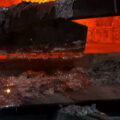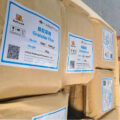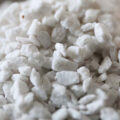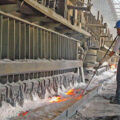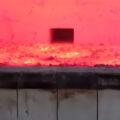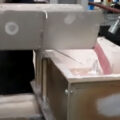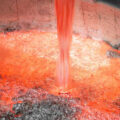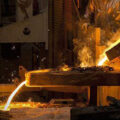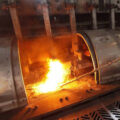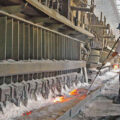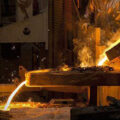Molten aluminium purification purpose is to remove the gas (mainly hydrogen) and solid impurities (mainly alumina) in the aluminum liquid. Purification of molten aluminum requires the use of substances that can separate aluminum oxide from the molten metal and drive hydrogen into the molten pool, but do not dissolve in the molten aluminum itself. This substance is called a flux and most of the solvents are solid or gas.
According to its functions, solid flux can be divided into: covering flux to prevent oxidation and gas absorption of molten aluminum; slag remover that promotes the separation of oxygen from molten aluminum into scum; and degassing flux that drives out supersaturated hydrogen dissolved in molten aluminum. The flux for melting the aluminum-magnesium alloy also has the function of preventing the evaporation of magnesium from the aluminum liquid. However, in pure aluminum smelting, the covering flux is generally not used, because the oxide film on the surface of the molten pool has a better isolation ability, which can prevent the aluminum liquid in the molten pool from continuing to oxidize and inhale without violent agitation.

The requirements for the molten metal purification are generally different due to the different types and uses of the alloy. Generally, the hydrogen content is required to be less than 0.15cm^3/100gAl, and for some special-purpose aerospace materials, 0.1cm3/100g(Al) the following. Because the detection of non-metallic inclusions cannot be accurately quantified, it is difficult to have quantitative requirements; sodium is generally controlled in the range of 5/10^6.
In view of the fact that the aluminum material itself will bring in certain inclusions and be polluted during the melting process, it must be purified to obtain clean aluminum liquid and provide qualified aluminum melt for the next processing. Since inclusions and slag inclusions are dispersed in the aluminum melt, the molten aluminium purification measures taken must cover all parts of the aluminum melt in the furnace without leaving dead corners, so that slag and inclusions can be removed more thoroughly. The method is that when the molten aluminum reaches a certain temperature and the viscosity is small, with the help of a flux, the slag inclusions will float or sink from the melt and separate from the metal.
In view of the continuous oxidation and suction of aluminum after melting, causing secondary pollution, the time of purification treatment should be arranged before casting and rolling, and it is best to start casting and rolling soon after purification treatment. For this reason, the purification treatment should not only achieve comprehensiveness, but also meet the requirements of timeliness.
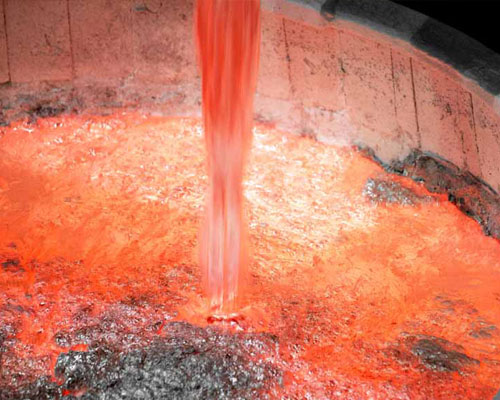
In order to achieve the purpose of aluminum liquid purification, first of all, it is necessary to minimize the entry of pollutants into the furnace. It cannot be considered that any debris can be “burned” as long as it enters the furnace without leaving a trace, or become ash floating on the liquid surface, or sink into the furnace bottom and aluminum. Liquid separation. The aluminum material itself and all materials that come into contact with molten aluminum must be kept “clean”.
The so-called “dry” means that aluminum ingots and waste materials should be stored indoors, free from moisture, and ensure that the bricks, refractory materials, fluxes, and operating tools used for furnace building are fully dried.
The so-called “clean” is to remove the entrained metal parts in the aluminum material in advance to prevent them from entering the furnace, and the agglomerates sticking to the furnace bottom and furnace wall should be processed in time. The aluminum liquid left over from the previous heat and the composition of this heat must be discharged, and if necessary, take measures to wash the furnace. The moisture content in the air is generally uncontrollable, so it is often found that the quality of aluminum produced in humid seasons is poor. In areas with high groundwater levels, it is also found that the bubble waste of aluminum materials increases every high tide, which reduces the yield of finished products.

